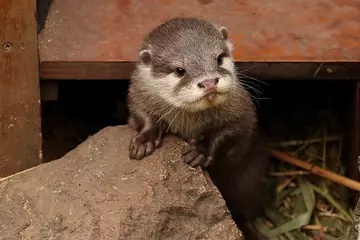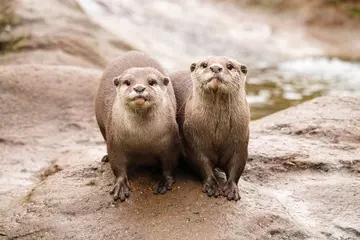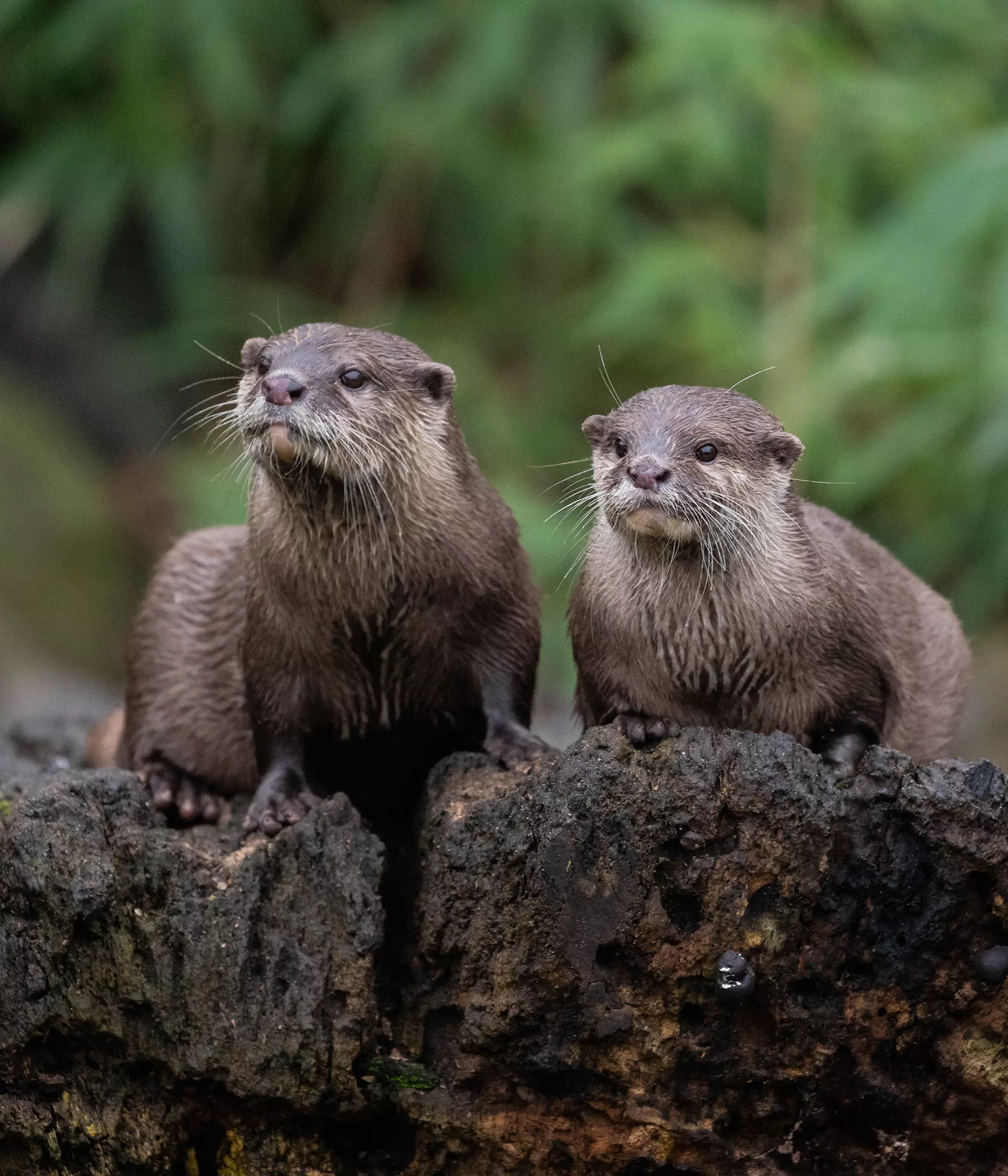
London Zoo is home to a family of Asian short-clawed otters.
Our male otter is called Siyam and our female is Midge, and two pups were born in January 2025. The youngsters — yet to be named and sexed — are part of the European breeding programme for this Vulnerable species. Vets will confirm the sexes of the otter pups once they are older and more independent from their parents.

Watch our otter pups taking their first swim in April 2025:
Asian short-clawed otter facts
What do Asian short-clawed otters look like?
The species, also known as Asian small-clawed otters or oriental small-clawed otters, is the smallest of thirteen species of otter. These small otters, as their name suggests, have short claws that reach no further than their digits. These allow them to use their paws to effectively feel for food, such as crustaceans, in muddy banks. Extremely dexterous, Asian short-clawed otters catch their prey with their partially-webbed paws instead of with their mouth (unlike other otters).
The otters are also streamlined with flattened tails that they use to propel them through the water. Otters' eyes are designed so that they can see equally as well in water as out.
Incredibly, young otters do not open their eyes until they are 40 days old, taking their first swim after about nine weeks old.

What do Asian short-clawed otters eat?
You will often see these otters eating freshwater shrimps, crabs, mussels, frogs and snails.
What threats do Asian short-clawed otters face in the wild?
Asian short-clawed otters are listed as vulnerable on the IUCN red list. They are under threat from water pollution, hunting, deforestation and habitat destruction.
Asian short-clawed otters can hold their breathe underwater for up to 4 minutes at a time - and they can even smell underwater to detect their prey.
Visit our Asian short-clawed otters at London Zoo
Book your London Zoo tickets today
London Zoo is a conservation zoo, and every visit helps to support our vital work protecting wildlife and their habitats around the world.
